David Knight and the Cheema brothers are doing it; Bhav Parekh is about to do it; and Steve Bassett and Clive Sheppard have been doing it for years. Making the transition from running a single store to multi-site operating is a huge leap, but is one that can certainly pay off if you approach it in the correct way. Convenience Store explores the risks involved and steps required to run several stores
WHY SHOULD YOU BUY ANOTHER STORE?
Until recently, Jamie and Anish Keshwara were kept busy with the family’s 5,000sq ft flagship Nisa store in Whittlesey, Peterborough, and a second Nisa Whittlesey store on Victory Avenue, which recently expanded from 1,800sq ft to 2,300sq ft. However, the brothers have recently exchanged contracts on a third store 12 miles away in Glinton, and have purchased a pub and applied for planning permission to convert it into a c-store.
The brothers aren’t phased about the prospect, though, as they entrust a lot of the responsibility of running stores to managers. “In some ways running several stores is easier, because having managers means you can go on holiday when you want without worrying about staffing and so on,” says Jamie.
Clive Sheppard, who heads up Devon Spar chain Chartman Group, agrees that more stores means less pressure. “When you go from one site to two, everything doubles so it is more of a financial strain. But when you grow from 10 to 11, it’s easier to integrate it and it’s only 10% of your capacity.”

This view is shared by Steve Bassett, who owns five Londis outlets in and around Weymouth, Dorset. “It’s easier opening the fourth and fifth stores because you can train staff at your existing stores and then send them out to the new stores. In Weymouth I have three stores, and we keep the till buttons the same at all of them so that staff are interchangeable. Also, if I have to subsidise a new store then it’s not a big risk, compared with if I only had one store.”

Steve has no regrets about becoming a multi-site operator. “I’d definitely recommend buying more stores. It’s hard work being in one store every day. If all you are doing is filling in for a staff member in-store, then you’re only saving £7 an hour, whereas now I make more money and am far more productive.”
TAKE YOUR TIME
When you hear the benefits of multi-site operating, the decision to take on more stores sounds like a no-brainer. But it isn’t a decision that can be rushed.
Says Clive: “We’ve been in this business for 30 years and we’ve taken things one step at a time.” The group, which owns eight forecourts and one Spar store, introduced head office operations two years ago. “We brought each site on to the head office system one at a time and didn’t get overwhelmed by everything. There are always things that can jump up and bite you, but it does get easier. We don’t want to get too adventurous and go into the unknown. We prefer to be cautious and grow steadily.”

Bhav Parekh, who owns Kwiksave Little Lever in Bolton, has no regrets about having taken his time to expand, having seen others fall into the trap of expanding their business too fast. “I didn’t want to make the schoolboy error of going in all guns blazing and coming up short,” he says.
“Our second store is imminent. It’s in Rochdale and in immaculate condition. It’s like a carbon copy of my store in many ways, but the investment hasn’t paid off for the current retailer because he didn’t get the imagery and layout quite right. He expanded too quickly and couldn’t keep up with the growth.

“It will be four years since I bought my first store, which is enough to time pay back a lot of the money that I borrowed. Now I can open that line of credit again to purchase the new store. It has also given me a chance to get to grips with the store and build up structures for it.”
PROCESSES AND PROCEDURES
One of the difficulties in expanding to several stores is ensuring stores can operate in your absence. That’s where creating a solid structure is critical, centralising certain operations and ensuring that there are enough rules and procedures in place so that the stores can operate without you.
Says Scottish retailer Harris Aslam, who has recently purchased his third and fourth stores: “Taking the leap to multi-sites is one of the hardest things you can do with a business. One or two stores you can manage yourself, but beyond that it’s processes, processes, processes. We’ve just changed over to Nisa’s e-positive system. Now we can control all the prices from head office. We are going to manage it centrally, but the managers will be communicating their feedback.”

Jamie has made implementing processes a priority at his store. “The more procedures you introduce, the fewer decisions need to be made in-store. In two stores you can get away without a staff manual, but when you get to three you need one.” He recently brought in a cash management system whereby each cashier uses an automated counter to cash up their till at the start and end of their shift. “It’s another thing I don’t have to worry about,” says Jamie. “The more you can automate a process, the better.”
Bhav is also embracing a more process-led culture. “In order to set up a new store, I’ll have to implement a more stringent managerial position in my current store with stricter rules regarding legal compliance, health & safety and environmental health,” he explains. “I was doing all this myself, but now when I go to store two, my staff will be able to keep the ship sailing.”
He claims that Costcutter’s CPoS system will be central to his business growth. “I can add on to the IT system as many stores as I want and it can be accessed remotely.”
Steve is an equally big advocate of technology. “It was hard going to two stores, but technology has made a difference. The biggest enabler was broadband and being able to access the stores remotely.”
PIC Londis Southwater - DAVID TO SOURCE
BUSINESS MODEL
Extending versus buying
Buying more stores isn’t the only way to grow your business, there is also the option of extending your existing store. Londis Retailer Ramesh Shingadia has recently expanded his Southwater store in West Sussex. He talks us through the benefits of extending your current store versus buying a new one.
Ramesh: “Before we carried out the work at Southwater, we looked at both options of buying a second store and expanding our current store. With every business, you want to make sure you’ve taken the store to it’s full potential and we saw that there were a lot of opportunities within the sales area at Southwater that we could take advantage of by expanding by 40%, and by bringing the post office in-store. We are expecting a 15-20% increase in turnover within six months.

“There are huge benefits to extending a store versus buying another shop in that you can contain a lot of your costs. You are still very much in control, whereas when you run multiple sites you have to operate a more detatched business and there are more logistical issues. We’ll see an increase in our wage costs and business rates, but as you are under the same roof you can largely contain your staffing costs.
“With a second site, you need a different type of management structure. It’s a big learning curve because the way you operate, organise and think changes and you have to delegate a lot more and you have to trust someone else to run the store. It’s difficult, but once you have done it successfully, it breaths confidence. Once people have done one, they often move on to their third, fourth and fifth stores very quickly.
“You see a huge number of new generation retailers going into multi-sites. I’ve run my shop for 30 years, but my son is envisaging a more multi-site operation for the future.”
STAFFING STRUCTURE
Staffing is another key area to take into consideration when building your empire. “When we were running just our Markinch and Kirkcaldy sites we had a total of nine staff,” says Harris. “This is extremely low, but we’re now reviewing the structure. We have 14 staff at the third store in Leven, and in the second site in Kirkcaldy we’ll be appointing more staff to get it up to nine. In Leven, six staff are full-time and eight are part-time. Flexibility is key and the easiest way to do that will be to get more part-time staff.”
Jamie is hiring more part-time workers, too, in order to create more flexibility. His body of staff currently stands at more than 80 across three stores, whereas when he initially took on managing the family’s two stores there were just over 20. “Most staff are working 16-25 hours a week, and then we have about a dozen full-time staff members.”

He has also taken on an area manager. “Our area manager visits all three shops regularly, introducing practices - store activity programmes, hiring staff and disciplining them where necessary. This frees up myself and Anish to work on refits and extensions.”
Shaun Marwaha, who is in the process of setting up his fourth and fifth Premier stores in Glasgow with parents Jack and Rita, has also brought in middle management. “The objective is to have the business set up so that if we’re not there for a few weeks the business runs itself. We took on a retail operations manager at the end of the last year and if there’s anything out of the norm, staff can just pick up the phone to them.”
He claims that people management is the most challenging part of multi-site operating. “The hardest part of it is the staffing side of things. We already have 40 employees and with the new sites we’ll have 75. I intend to create an in-depth training module to create a structure so that staff can move up to different levels within the business - we like to promote from within and this will help.”
STEP BACK AND TRUST EMPLOYEES
One of the downsides of no longer spending all your time at one store is that you aren’t there to offer the all-important personal touch that can give convenience stores the edge over their rivals. “Although the business is growing, ensuring that customers are at our heart is still vital,” says Harris. “I do regret not being able to do that personally, but we are conveying this through our staff. While recruiting staff we’ve been looking at those who can talk and make friends with customers. At our third store in Leven we have taken on our first manager, Lorraine, and one of the jobs I’ve tasked her with is to reach out to the community.”
Shaun is of a similar mindset: “When we took on our third store we wanted to hit the ground running with management structures and centralisation processes so that we could take a step back from the day-to-day running. We’re focusing all our staff on integrating with the community. The managers are there to get to know the customers.”

Placing your faith in the hands of your staff is one of the biggest hurdles when buying more stores, says Steve. “The big leap is realising you can’t be in two places at once. If you’re hands on, you have to disconnect from the day to day. You have to trust that the guy doing the milk order is doing it correctly. That’s why you put systems in place.”
Jamie concurs: “My brother Anish and I still do shifts from time to time. But if you get caught up in micro-managing you can only look after one store. Trust is a large part of it, but as long as you have systems in place you can keep on top of it.”
As company director at three-strong Spar business Norton House Retailing in Worcestershire, Becky Sparkes has learnt to put her faith in her teams. “You can’t get stuck in the day-to-day routines, you need to be problem-solving. As a control freak, I wanted to do all the orders myself, but I had to step back.”
STICK WITH WHAT YOU KNOW
Once you have set up a structure whereby you are ready to open up more stores, it is crucial not to stray from this, states Budgens retailer David Knight, who opened his second store in Henfield, West Sussex, in February. “It’s very easy when you buy your second store to start doing things a different way operationally, for example, buying in a new way.
“However, if you have a successful system in your original store, then you should stick to it. We spent £12,000 ripping our Henfield site’s IT system and replaced it with the one we have at Hassocks, which we knew how to use. I’d rather focus on the business sales and growth, rather than writing new procedures for the second store.”

Steve is equally convinced that ‘if it ain’t broke, don’t fix it’. “You have to go with what you already know - sometimes it’s a case of: ‘I don’t care if there’s a better of way doing something’. You can only have one system across all the stores. For example, we only have one price file across all the stores.”
He takes a similar view when it comes to looking at new sites. “I’m not looking for a CTN when I’m looking at new stores, I look for other c-stores and stick to what I know. I got involved in a bakery once and didn’t know what I was doing and ended up having to give it away,” he says. “I don’t have a 100% rigid template, but 95% of the DNA at each store is the same.”
NETWORKING
Learning from each other
The ability to draw on the experience of a network of contacts, built up from years of working in the trade and attending events, is a key advantage that independent retailers have when looking to expand their businesses into new areas, according to brothers Pinda and Paul Cheema (right).
“When we were looking at our third site, a forecourt close to our original store in Tile Hill, Coventry, we were able to get a lot of fantastic advice from other retailers we knew who had run fuel sites,” explains Paul.
“We knew about retail, but we had no experience of the fuel side of things, so it was great to get the benefit of other people’s views.”

Since taking over the site last December, the brothers have redeveloped the retail offer inside the site based on their successful store nearby, but with a few new twists more suitable for a forecourt, such as a coffee machine and a meal deal offer for eating on the move. New store graphics have been introduced and both shop sales and fuel sales have grown as a result of the increased footfall.
Paul and Pinda are joining other retailers, wholesalers and suppliers at the inaugural Convenience Store Conference, to be held at the Hallam Conference Centre in central London on 17 June, with the theme of growing business for independent retailers.
As well as hearing from retailers who have successfully grown their businesses both in person and via video presentations made specially for the event, you can also hear for the first time new market information about the changing structures and growing sectors of the market, and the latest shopper insight from HIM’s 2014 Convenience Tracking Programme.
HIM has also conducted an exclusive survey about how retailers give their views to suppliers on which forms of activity are the most successful at building sales.
The website address for booking your place is in the text below, or call 01293 610439 for more information.



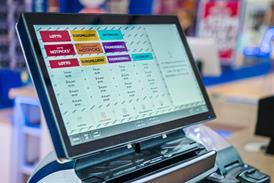







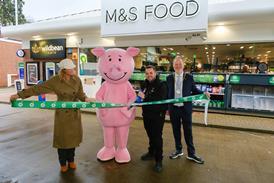
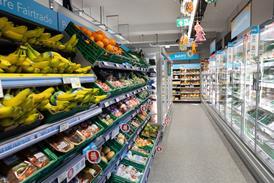







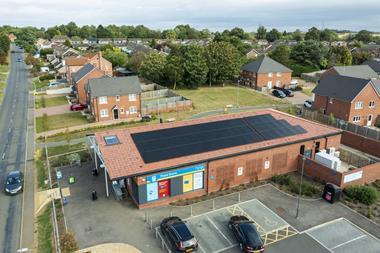

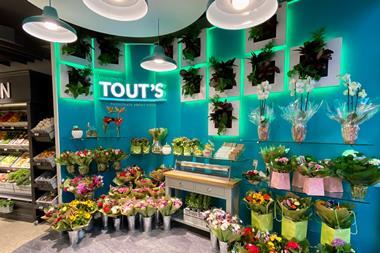

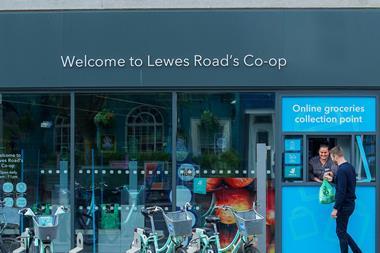
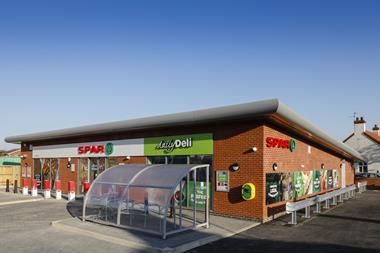
No comments yet